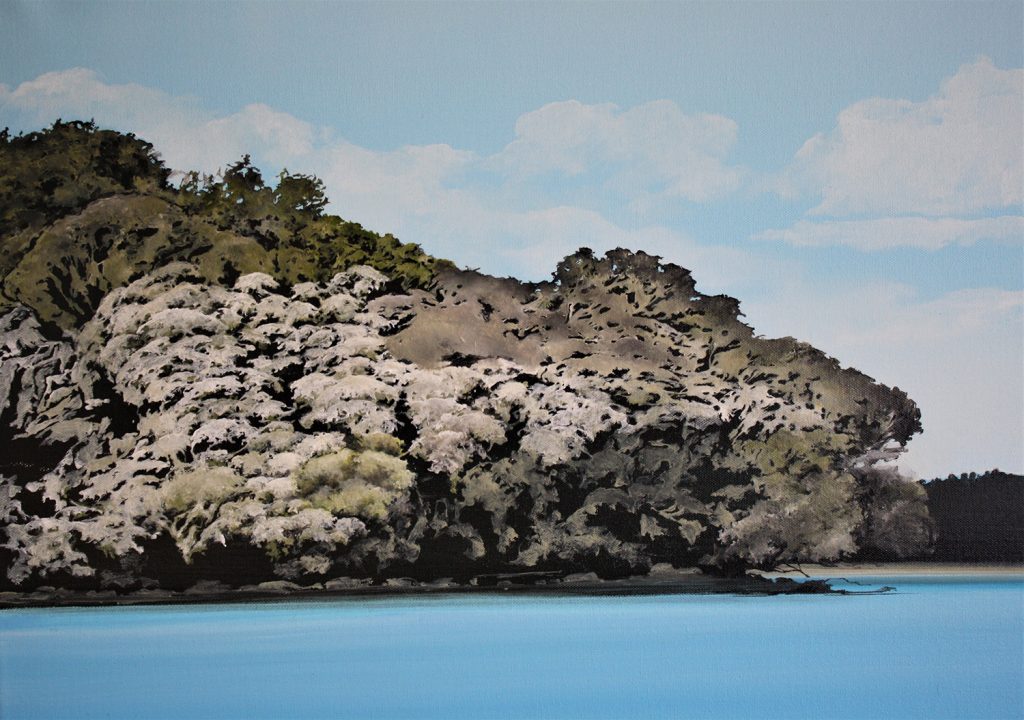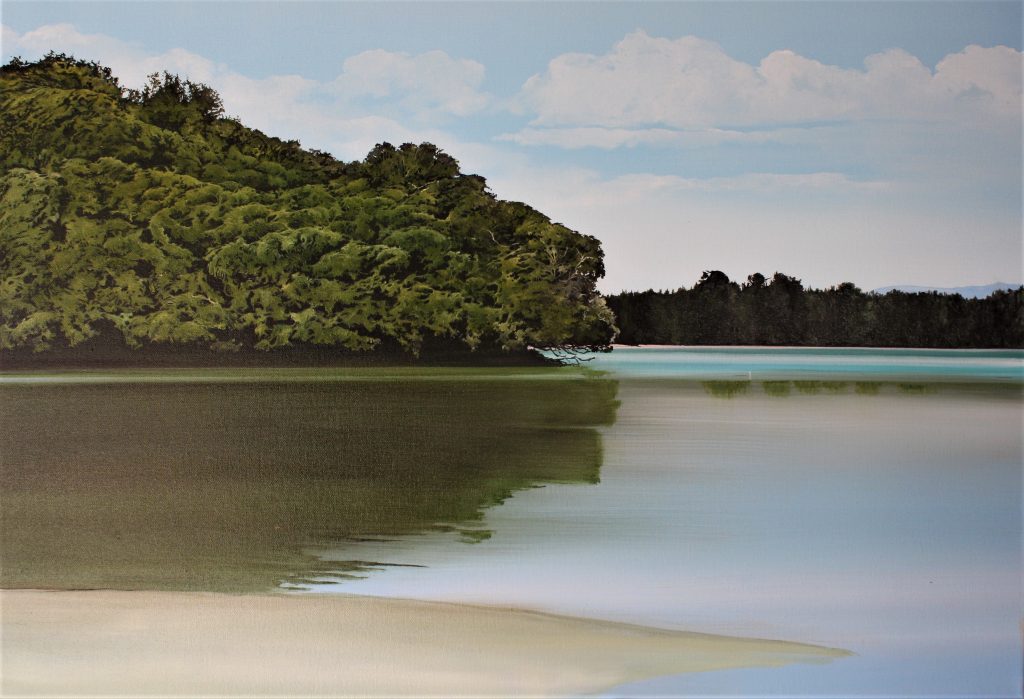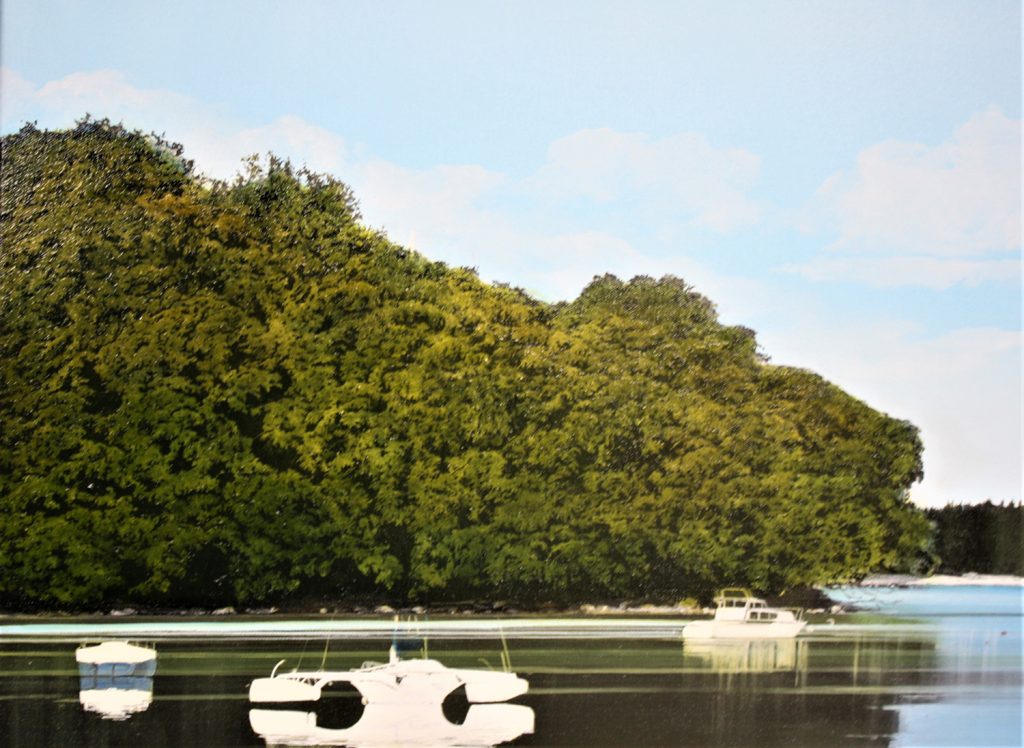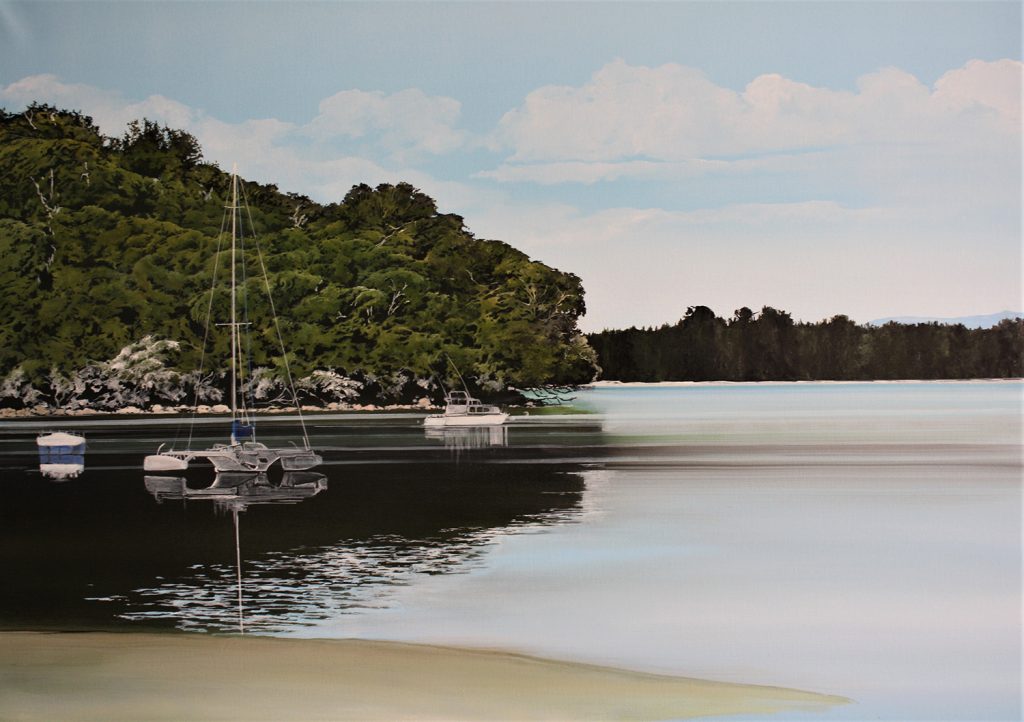These artist’s notes are copyright to Graham Baker and may not be shared or copied without permission. Any enquiries, please email to grahambaker@gmail.com.
Oil painting on canvas. 48x36 inches. 120cm x 90cm.

It was the boats that caught my attention. It was quite some time before it occurred to me that it would make a great painting. I wouldn’t have to add or remove anything as far as the composition was concerned.
Process
I have used an overhead projector for this, at least I had the landscape and elements in the right spot.
Work from big to small at every stage of creating your painting. I have done this with the sky, sea and shape of the hillside. This is how and where we start a painting, everytime.
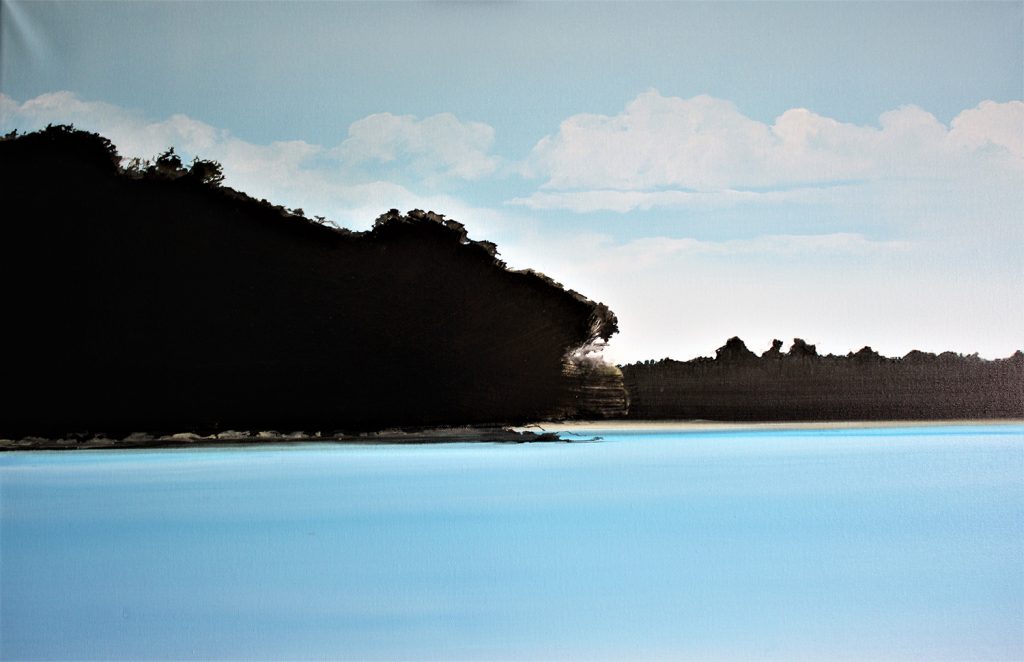
The sky and the sea were blended with big brushes. 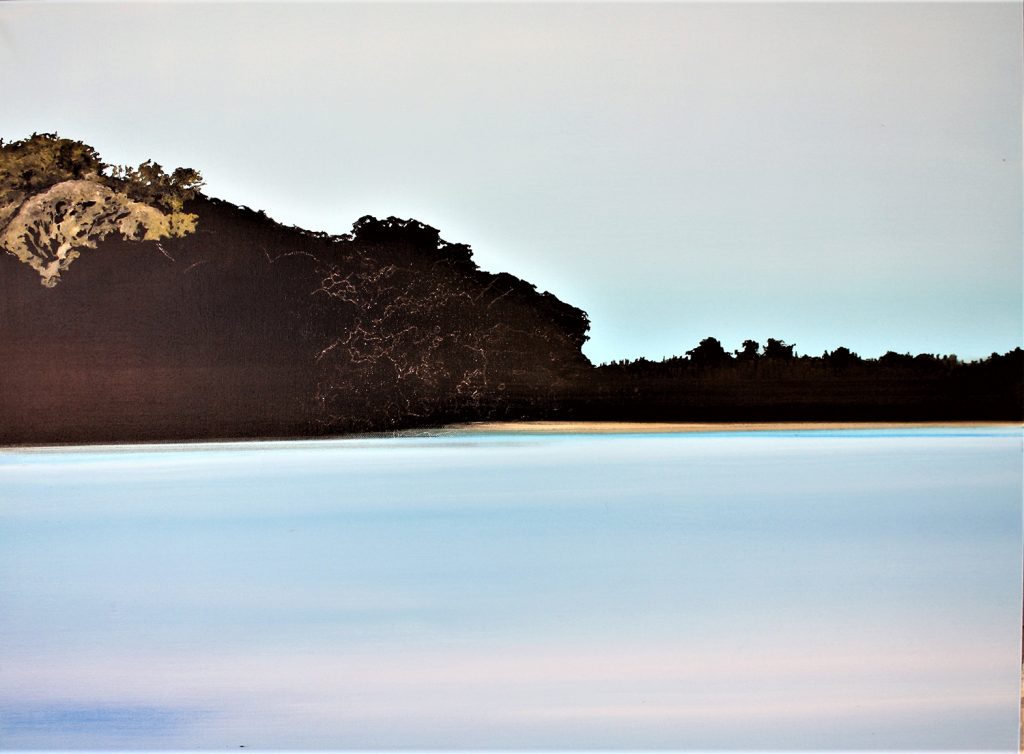
The larger the brush the easier it is to cover the surface. The clouds were put in using the puddle technique I have mentioned before.
At this stage I regarded it all as an underpainting, my initial selection of colours probably wouldn’t be perfect but these colours divide the painting into its separate elements and will add harmony to subsequent layers.
Then we go down to the next level. All the work from here on is within these shapes and we can pick them off one at a time, as I have with clouds in the sky, colours in the sea and the trees painted white on the hillside. Don’t get caught up on the final outcome, it's just a process or order. Stick to it.
Second image. I painted some of the trees to test or feel my way into how I was going to paint the bush, before stopping for the day. You may be able to just pick out I am following a chalk layout as an indication where the trees flowed down the hillside.
My method with this painting was to paint all the trees in white by rolling the ‘liner brush over’ method, linking them up along the tree tops. I had to leave the white to dry before blending the various green tones over the trees. As demonstrated, with the boathouse notes, earlier in my blog. Over the blue water I blended layers of various colours. The green was the reflection from the hillside bush and the sand of a low tide, dark green for shadow and deeper water and white reflection of the clouds and sky.
Work from general to specific. In this case the boats have been blocked in with white paint. When that is dry I have added some of the detail on the boat and reflection in the water. Finally detailing everything a boatie would appreciate.
Detailing is essentially bringing into focus elements the artist wishes to bring to the attention of the viewer.
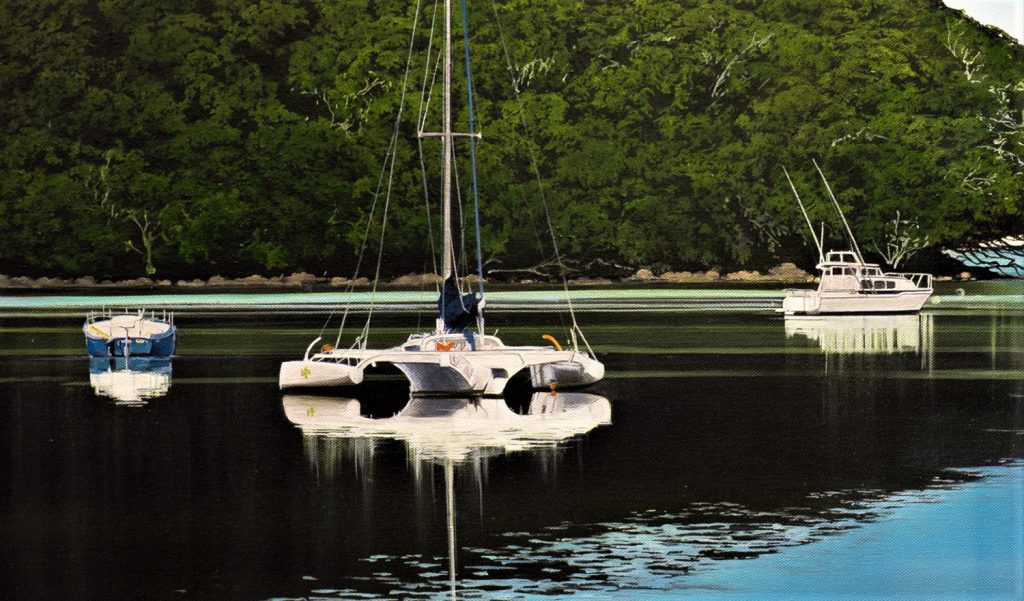
Remember: Whether excited, worried about how the painting is going to work out or experimenting with the technique, many artists skip the order and work the next couple of layers in advance to see how the painting will look when it is finished. Don’t be tempted. Work the big shapes first then the biggest shapes within them and so on.
Sticking to the order of the painting is important. It prevents the artist having to go back to make corrections that involve mucking up other areas. If we are painting in the correct order and do make an error or simply don’t like the latest part of our painting the correction is always within a designated space.
These artist’s notes are copyright to Graham Baker and may not be shared or copied without permission. Any enquiries, please email to grahambaker@gmail.com.
